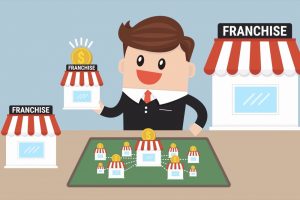Average Profits and Expenses for Franchises
The best approach for using this information is to consider it a general guideline, this is subject to change by restaurant brand, location, expertise of the owner, and the overall economy. Generally, franchise organizations do not publicly disclose their average profits and expenses. However, some data can be found in a franchise’s Franchise Disclosure Document (FDD), which is given to prospective franchisees during the due diligence process.
It’s also important to note that profitability and expenses can vary significantly within each type of franchise due to factors like location, management skills, competition, and market demand. Below is a generalized list of potential expenses and profits related to various franchise types:
- Quick Service Restaurants
- Average Initial Franchise Fee: $20,000 – $45,000
- Average Initial Investment: $100,000 – $1.2 million
- Profit: Can vary widely, with some reporting net profit margins between 6% and 9%.
- Full-Service Restaurants
- Average Initial Franchise Fee: $25,000 – $50,000
- Average Initial Investment: $200,000 – $3 million
- Profit: Net profit margins can range from 3% to 6%, but can vary widely.
- Fitness Centers
- Average Initial Franchise Fee: $15,000 – $35,000
- Average Initial Investment: $50,000 – $300,000
- Profit: Some franchisors report average net profit margins between 10% and 15%.
- Cleaning Services
- Average Initial Franchise Fee: $1,000 – $50,000
- Average Initial Investment: $2,000 – $100,000
- Profit: Varies widely, with some successful franchises reporting net profit margins of 10% to 15%.
- Children’s Services (Education and Entertainment)
- Average Initial Franchise Fee: $20,000 – $50,000
- Average Initial Investment: $30,000 – $200,000
- Profit: Profits can vary widely, but net profit margins of 10% to 15% are reported by some franchises.
- Pet Franchises
- Average Initial Franchise Fee: $10,000 – $50,000
- Average Initial Investment: $50,000 – $250,000
- Profit: Varies, but some successful franchises report net profit margins between 5% and 10%.
- Automotive Repair and Maintenance
- Average Initial Franchise Fee: $20,000 – $50,000
- Average Initial Investment: $100,000 – $500,000
- Profit: Varies, but some franchises report net profit margins between 6% and 10%.
- Beauty Salons and Spas
- Average Initial Franchise Fee: $20,000 – $50,000
- Average Initial Investment: $100,000 – $500,000
- Profit: Some franchises report net profit margins between 5% and 10%.
Please note that these figures are estimates and averages, and the actual costs and profits can vary significantly. Additionally, these are just some examples and there are many other types of franchises. It’s always important to do thorough research and due diligence before investing in any franchise.







